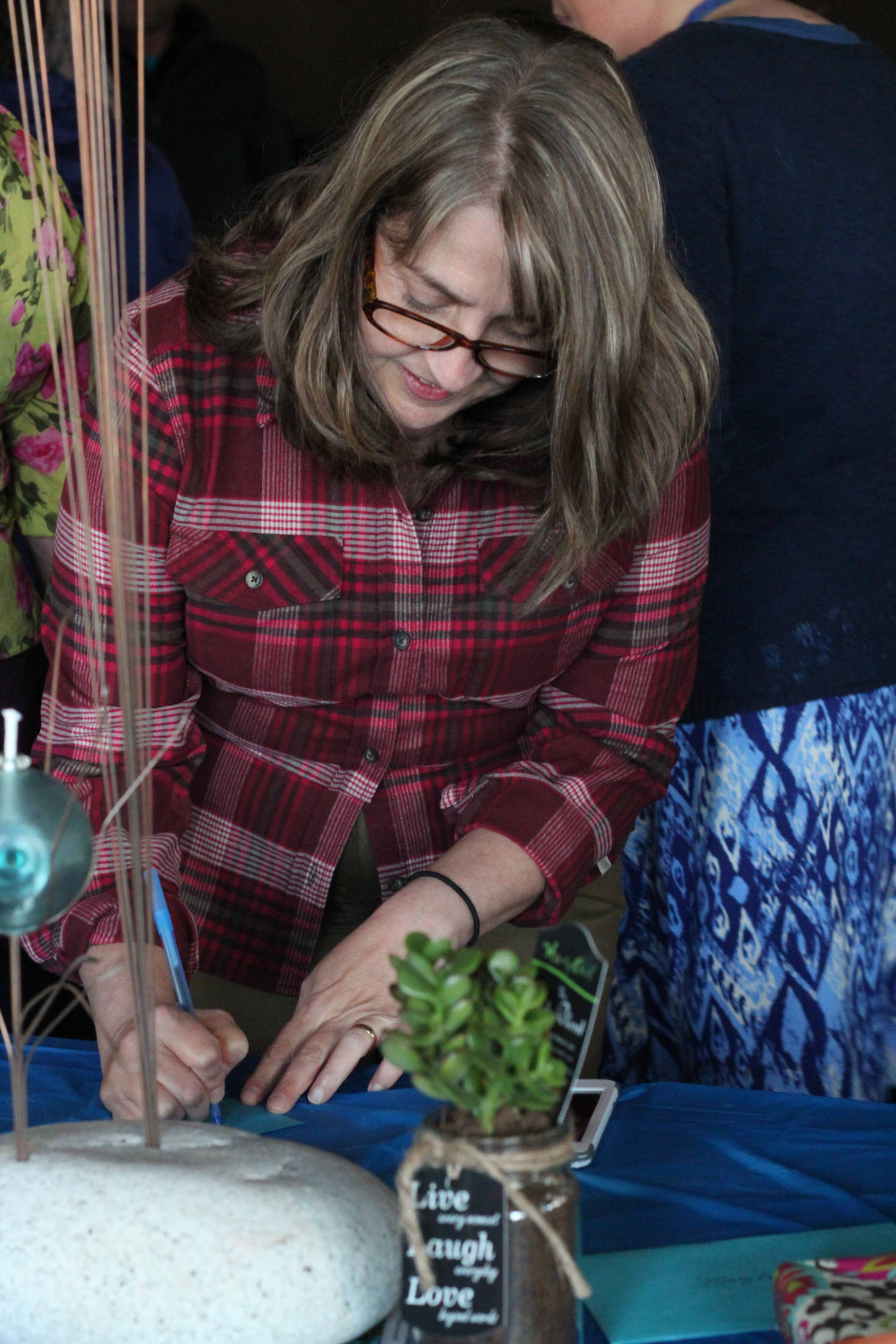Editor’s note: This article has been updated to correct Julie McCarron’s age.
“Every woman deserves a midwife.”
That’s the mantra you’ll likely hear if you spend more than a little time in the company of Mary Lou Kelsey, Homer’s most legendary certified nurse midwife.
A transplant in Ohio in 1981, Kelsey retired on Oct. 13 after more than 35 years in midwifery care.
She delivered more than 1,000 infants and pioneered the midwifery program at South Peninsula Hospital. She leaves several partners to carry on her work at Homer Medical Clinic.
At a party celebrating Kelsey’s retirement on Oct. 13 at the Best Western Inn in Homer, residents young and old, some acquaintances of Kelsey’s and some delivered into her hands, gathered to share their favorite memories of her.
Julie McCarron has plenty of thoughts from her time as a colleague of Kelsey’s, but her history with her goes back to when she was 36 and Kelsey was helping her through her pregnancy with twins.
“She’s a natural midwife in so many ways,” McCarron said. “Her midwifery transcends pregnancy, you know? … Just in the way she cares for people.”
McCarron’s earliest interaction with Kelsey was when she was in the process of moving to Homer in the late 1990s.
She wrote a letter asking about possibly CNM jobs in the area, and said Kelsey’s response was was kind and welcoming.
“She just always has this way about here where she’s just so kind to people and she really… she cares for all the people around her as if she was taking care of a pregnant mom,” she said.
Homer’s midwifery program is ranked the best in Alaska, according to South Peninsula Hospital CEO Bob Letson. Kelsey had a lot to do with that, he said.
“I’ve been at the hospital almost 10 years and she has been an active midwife at the hospital. She started the program and has been there through all of the growth.”
Not only did Kelsey get the program started with her husband, Dr. William Bell, she helped train a lot of the hospital’s obstetrics nurses, Letson said.
“…She’s like the foundation of the program, so she’ll be missed, but she has trained other people and brought them along so that we have other good midwives now,” he said.
The program functions with the nurse midwives attending the majority of births and helping women before and after them. Patients are refereed to the hospital’s two obstetrics gynecologists in high risk situations, Kelsey said, though the nurse midwives will usually still attend the births to be an advocate for the mothers.
The nurse midwives and OBGYNs work closely as a team, Kelsey and Letson said.
From his last 10 years with the hospital, Letson remembers that Kelsey has always been very patient and focused.
“She was always trying to do the very best for the patients, trying to make sure our work processes were stellar and safe,” he said. “She’s a good team player.”
Letson and Kelsey both said Homer’s midwifery program is unique in its evolution when compared to the rest of the state.
“The other thing I’m proud of is that, really, our hospital is very unique as a community hospital that the majority of births, almost all of them, are attended by nurse midwives,” Kelsey said.
Nationwide, Letson said the trend is that midwives will more likely be found in rural areas than in cities.
“I think in some of the real large cities like Fairbanks and Anchorage, there’s probably more OBGYNs that do a lot of the care themselves. But here our two OBGYNs work very closely with the midwives and it’s one team, they work together,” he said.
However, Kelsey pointed out that in the grand scheme of things, midwifery is becoming more well known in America, having been standard practice in many European countries for years.
“I think it’s much more known in the United States that there are nurse midwives,” she said. “And I think that because they’ve seen them in different settings — in inner city hospitals and in private practices and in rural care, and also military, a lot of military nurse midwives, and on Native reservations… — so, we are all over and I think that people know more about us now, so I’ve seen that really grow and you can usually find a nurse midwife in your community.”
Kelsey gravitated toward midwifery while working as a nurse in psychiatry as well as labor and delivery. She was inspired by the tradition of midwifery in Appalachia, not too far away from her native Ohio, she said.
“I really liked being with women and helping women and families through birth,” she said. “I found that out as I worked as a nurse.”
Kelsey said she just feels it’s important for mothers to have an advocate there with them no matter where they give birth, whether it be at home or in a hospital. That’s where midwifery serves people, she said.
“We would be there for the entire experience,” she said. “In other words, if a doctor attends your birth, they do show up at delivery. So it’s really having somebody who is your advocate with you the entire time and making decisions with you.”
There is a misnomer out there that mothers ought to give birth a certain way, Kelsey said.
“But really, what we feel, is what’s right for the woman. And we will support her in that.”
Reach Megan Pacer at megan.pacer@homernews.com.


